#i am UP. SET.
Note
Rowling isn't denying holocaust. She just pointed out that burning of transgender health books is a lie as that form of cosmetic surgery didn't exist. But of course you knew that already, didn't you?
I was thinking I'd probably see one of you! You're wrong :) Let's review the history a bit, shall we?
In this case, what we're talking about is the Institut für Sexualwissenschaft, or in English, The Institute of Sexology. This Institute was founded and headed by a gay Jewish sexologist named Magnus Hirschfeld. It was founded in July of 1919 as the first sexology research clinic in the world, and was run as a private, non-profit clinic. Hirschfeld and the researchers who worked there would give out consultations, medical advice, and even treatments for free to their poorer clientele, as well as give thousands of lectures and build a unique library full of books on gender, sexuality, and eroticism. Of course, being a gay man, Hirschfeld focused a lot on the gay community and proving that homosexuality was natural and could not be "cured".
Hirschfeld was unique in his time because he believed that nobody's gender was either one or the other. Rather, he contended that everyone is a mixture of both male and female, with every individual having their own unique mix of traits.
This leads into the Institute's work with transgender patients. Hirschfeld was actually the one to coin the term "transsexual" in 1923, though this word didn't become popular phrasing until 30 years later when Harry Benjamin began expanding his research (I'll just be shortening it to trans for this brief overview.) For the Institute, their revolutionary work with gay men eventually began to attract other members of the LGBTA+, including of course trans people.
Contrary to what Anon says, sex reassignment surgery was first tested in 1912. It'd already being used on humans throughout Europe during the 1920's by the time a doctor at the Institute named Ludwig Levy-Lenz began performing it on patients in 1931. Hirschfeld was at first opposed, but he came around quickly because it lowered the rate of suicide among their trans patients. Not only was reassignment performed at the Institute, but both facial feminization and facial masculization surgery were also done.
The Institute employed some of these patients, gave them therapy to help with other issues, even gave some of the mentioned surgeries for free to this who could not afford it! They spoke out on their behalf to the public, even getting Berlin police to help them create "transvestite passes" to allow people to dress however they wanted without the threat of being arrested. They worked together to fight the law, including trying to strike down Paragraph 175, which made it illegal to be homosexual. The picture below is from their holiday party, Magnus Hirschfeld being the gentleman on the right with the fabulous mustache. Many of the other people in this photo are transgender.

[Image ID: A black and white photo of a group of people. Some are smiling at the camera, others have serious expressions. Either way, they all seem to be happy. On the right side, an older gentleman in glasses- Magnus Hirschfeld- is sitting. He has short hair and a bushy mustache. He is resting one hand on the shoulder of the person in front of him. His other hand is being held by a person to his left. Another person to his right is holding his shoulder.]
There was always push back against the Institute, especially from conservatives who saw all of this as a bad thing. But conservatism can't stop progress without destroying it. They weren't willing to go that far for a good while. It all ended in March of 1933, when a new Chancellor was elected. The Nazis did not like homosexuals for several reasons. Chief among them, we break the boundaries of "normal" society. Shortly after the election, on May 6th, the book burnings began. The Jewish, gay, and obviously liberal Magnus Hirschfeld and his library of boundary-breaking literature was one of the very first targets. Thankfully, Hirschfeld was spared by virtue of being in Paris at the time (he would die in 1935, before the Nazis were able to invade France). His library wasn't so lucky.
This famous picture of the book burnings was taken after the Institute of Sexology had been raided. That's their books. Literature on so much about sexuality, eroticism, and gender, yes including their new work on trans people. This is the trans community's Alexandria. We're incredibly lucky that enough of it survived for Harry Benjamin and everyone who came after him was able to build on the Institute's work.

[Image ID: A black and white photo of the May Nazi book burning of the Institute of Sexology's library. A soldier, back facing the camera, is throwing a stack of books into the fire. In the background of the right side, a crowd is watching.]
As the Holocaust went on, the homosexuals of Germany became a targeted group. This did include transgender people, no matter what you say. To deny this reality is Holocaust denial. JK Rowling and everyone else who tries to pretend like this isn't reality is participating in that evil. You're agreeing with the Nazis.
But of course, you knew that already, didn't you?
Edit: Added image IDs. I apologize to those using screen readers for forgetting them. Please reblog this version instead.
#transgender#trans history#transsexual#transphobia#Magnus Hirschfeld#holocaust#holocaust denial#book burning#j.k. rowling#jk rowling#just in case you missed what i mean by all this: go fuck yourself anon :)#trans people have always existed#and we will always exist#if you really wanna pick a fight with me over well-documented history then you better bring in some sources to back your shit#queer history#queer#lgbt+#lgbta+#lgbt#lgbt history#edit: i finally got around to those damn image IDs. i am so very sorry for totally forgetting that's my bimbo moment of the month#also real quick i thought about adding an image of the actual building but the only one i can find has a Nazi parade in front of it#it was taken the day of the book burning raid and honestly if i were to include it then i'd add it to the first few paragraphs#and i think the story's better told when you uphold the hope Magnus Hirschfeld and all the researchers he worked with had#also keeps being brought up: yes Hirschfeld was a eugenicist. it was a popular belief set that was only discredited after WW2#Hirschfeld died in 1935. he literally didn't live long enough to see science turn against those beliefs and practices#considering how he changed his mind on transitions i like to think he would've changed his mind on eugenics too if he'd lived
16K notes
·
View notes
Text


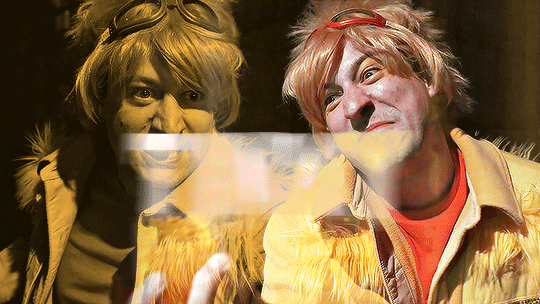


@pscentral event 20: antagonists
↳ THE LORDS IN BLACK in NERDY PRUDES MUST DIE
#nerdy prudes must die#npmd#starkid#npmdedit#team starkid#the lords in black#hatchetfield#hatchetverse#npmd spoilers#userisiah#userfaiths#userbaz#usercats#userhallie#noooo fucking clue what to tag in this fandom lmao#musicaledit#? sure#anyway yeah i watched npmd and immediately had to make this i was up until 1 am last night#wouldve been earlier but i had to take a break for dnd lol#i was gonna do a tua set for the event but this is easier and better so like. slay#i just wish they had more screen time. pokey and tinky have less than 20 seconds each </3#oh and the titles and stuff are from the fan wiki. hope i didn't get anything wrong#i've been getting a lot of use out of this motion blur text transition its so funky fresh#*edits
8K notes
·
View notes
Text
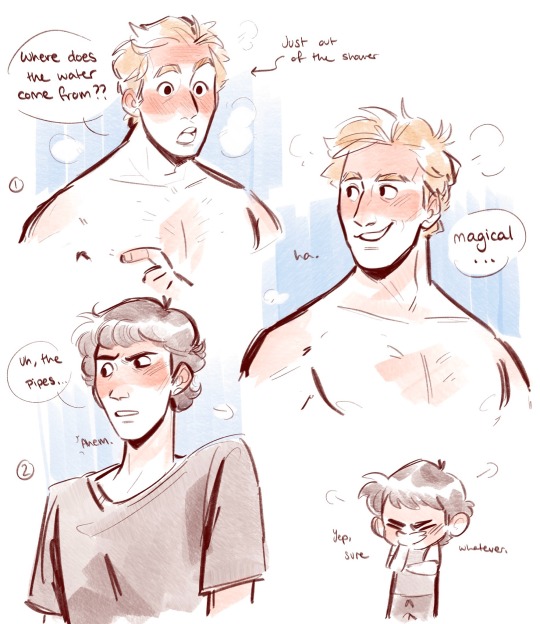

Back at it with my enchanted merthur shenanigans
#when Merlin goes to work#(I am undecided on what he does but I think he does have a job (probably a librarian I’d that’s not TOO cliche…))#he sets Arthur up with a bunch of history books and documentaries to try get him up to date (as much as he can)#and in the evenings they watch all Merlin’s favourite tv shows and movies#I can’t pick what kinds of movies Merlin and Arthur like#I get the feeling they both like pride and prejudice but I’m also biased#I think Arthur would like murder mysteries#ALSO If anyone’s got any fics where Merlin introduces Arthur to modern society please please PLEASE GIVE THEM TO ME#my art#bbc merlin#merlin#merlin emrys#arthur pendragon#merthur
3K notes
·
View notes
Text
#feel free to rb for larger sample size#also if you have any crit on how this is set up feel free to lmk#i wasn't sure the best way to word it#if you're wondering my answer. the answer is i am pants shittingly afraid!!!!!!!!!!!!
9K notes
·
View notes
Text
OKAY BUT THE CALLBACK TO THE THE FIRST THOR MOVIE
Anyone remember the theme the first time we had a broken bridge and Loki? Death and destruction.

And now? Life and creation.

#loki#fucking hell#loki spoilers#brb i am crying forever#not to mention he's now become old loki on his throne at the end of time#which sets up agent of asgard which just.....FUCKKKKKKK
3K notes
·
View notes
Text
FINAL VOTE (3rd place votes)


propaganda and summaries are under the cut (May include spoilers)
M*A*S*H: 11.16 Goodbye, Farewell and Amen
In the closing days of the Korean War, the staff of the 4077 M*A*S*H Unit find themselves facing irrevocable changes in their lives.
LITERALLY the most episode ever. For American television broadcasts it remains the most-watched primetime television episode ever, beaten only by a number of Super Bowls, the moon landing, and the Nixon resignation.
https://en.wikipedia.org/wiki/Goodbye,_Farewell_and_Amen
Star Trek: The Original Series: 2.01 Amok Time
In the throes of his Pon Farr mating period, Spock must return to Vulcan to meet his intended future wife, betrothed from childhood.
this is the fuck or die episode
https://en.wikipedia.org/wiki/Amok_Time
#m*a*s*h#mash#star trek#st tos#star trek the original series#tos#poll#polls#round8#i am straight up scared to vote in this.#anyway. all set to end on destiel day <3
3K notes
·
View notes
Text

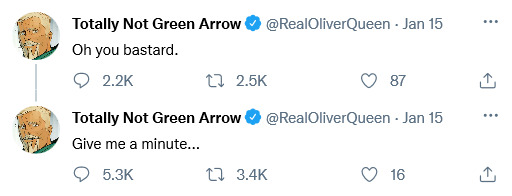
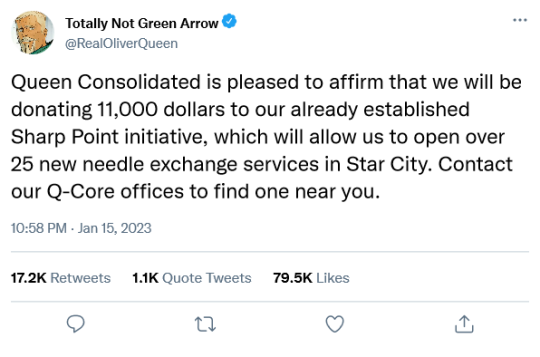
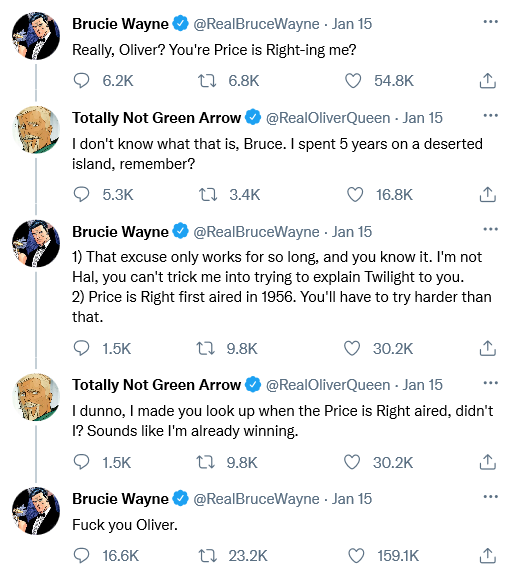

You ever have those moments where an idea just... won't leave your head?
#dcu#batman#bruce wayne#green arrow#oliver queen#fake tweets#things I was not able to adequately convey in the format:#obviously Bruce's reasoning is really a lot closer to Ollie's but Bruce has a secret identity to maintain and Ollie... well#I don't know if you can make it out but his twitter profile pic is him in the Green Arrow costume and that's not accidental#also I am pretty sure that Bruce does just have the first airing date of The Price is Right saved in a corner of his mind palace#just in case it's ever relevant to a case#and he's angry at Ollie because Ollie knows that and also knows Bruce can't admit it because it would raise too many questions#also I did consider an extra scene where they tag-team harass Lex#but it just didn't sound right to me#also I put a whole load of Green Arrow references in here#Q-Core N_Singh and H_Fyff are all from the Nu52 Green Arrow runs#albeit Naomi and Henry are at least in the good Nu52 runs#obviously this is post-Snowbirds Don't Fly/Hard Travelling Heroes in general so Oliver is trolling Hal and setting up needle exchanges#and even Hal explaining to Ollie what Twilight is is a reference to one of the most dated things about the Arrow pilot:#the extremely tacky Twilight joke#anyway hope you enjoyed!
14K notes
·
View notes
Text
(volume warning)
this was surprisingly fun to make so i'll probably do another
#especially now this one is slightly outdated in terms of my personal style lmao#but its fun!!#i have a list of more vines to do!!#will probably go about making it in a different way tho!!!#gotta fuck around with brush settings and stuff#i fucked up a couple times w this one and its Evident once you Notice#but i learned a few things. i am... Improving. very slowly.#i think the thumbnails had more Personality to them. theyre funnier lmao#maybe one day ill even do animatics bc hoo Boy do i have ideas for those#but in order to do that i'll actually have to learn backgrounds and environments#welcome home#welcome home puppet show#also im posting this early bc im a coward <3
5K notes
·
View notes
Text

Lan Wangji Goes To Lotus Pier AU: Part 1: Dread on Arrival
(Part 2)
#poorly drawn mdzs#mdzs#lan wangji#jiang fengmian#jiang cheng#wei wuxian#Yungmeng Jiang Training Arc AU#MDZS AU#The AU name for this idea is something I am 100% willing to change if someone has a better one.#There will be at least 2-3 more comics so *please*. Ideas and feedback welcome.#The core idea behind this AU is that LWJ goes to study with the Yunmeng Jiang sect instead of JC and WWX going to Cloud Recess#But why? Well I imagine Lan Xichen set it up to give LWJ a challenge (more social than skill based) and LWJ rose to it (begrudgingly)#Sort of a 'You've mastered so many Lan techniques but Other Sects have styles that are worth learning.' set up.#Lan Qiren agrees mostly on the basis that...well it's LWJ. Yunmeng Jiang is unruly but LWJ is beyond that riff-raff. He'll rise above it.#This is the story of a boy who thrives on routine and rules spending time in a place that is his apparent antithesis.#Also it is so warm there. He is used to it being cold and what do you MEAN just take off some of my layers?#I just want to see him struggle and flail in many situations. And get him in Jiang Purple. Is that so wrong of me?#(Soaking wet JC is part of my 'JC was born to swim; forced to hold a sword' agenda. Do not remove him from the water)#((Politeness notes: JFM would *not* call LWJ 'lan wangji' nor would LWJ be vocally impolite to a sect leader.))
2K notes
·
View notes
Text
feeling a little feisty today so here goes
10k notes on this post and i will post one (1) rtc ship artwork
(bonus: person who gets to 10k will be the one to pick which ship)
EDIT: figures this needs a deadline too so you have until march first!!
edit AGAIN: y’alls missed the deadline but i will still draw the ship artwork! i’ll make a poll and whichever ship wins will get the drawing!
2K notes
·
View notes
Text




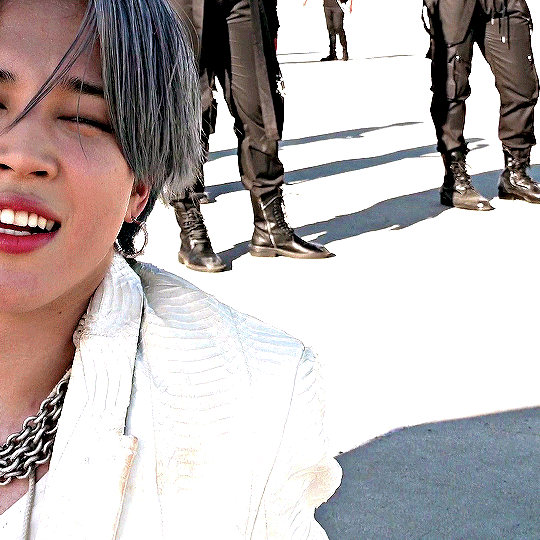
slaying choreo is hard
cr. namuspromised
#jimin#jimin*#park jimin#jiminedit#pjmdaily#btsedit#btsgif#dailybts#userbangtan#userpat#underbetelgeuse#trackofthesoul#usersevn#annietrack#usersky#usersan#usertaeyungie#usermaggie#*gifs#yes i am reposting this set after tumblr fucked up the formatting the first time#please pretend you've never seen it and reblog it again with the same enthusiasm <3 (and delete the old version lol)
1K notes
·
View notes
Text
because I remembered another weird thing I do and also that someone once described it as "the most transmasc thing ever" so let's get to the bottom of if that statement is true or not
#lavender polls#also i am not the arbiter or gatekeeper of who is and isn't transmasc please choose with your heart#this is just set up this way so that i can. yknow. determine if this is actually a transmasc thing!#i would include more identity paramaters but that's beyond the scope of a ten-option-max poll for fun
6K notes
·
View notes
Text





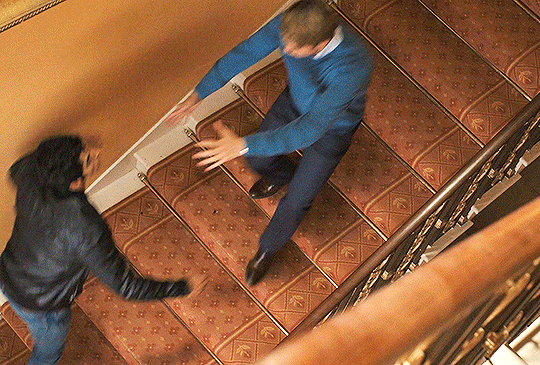
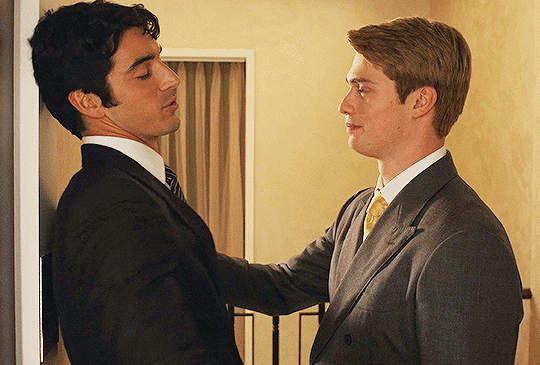
Firstprince + hugs
#red white and royal blue#alex claremont diaz#henry hanover stuart fox#taylor zakhar perez#nicholas galitzine#rwrbedit#rwrb movie#rwrb source#i am but a simple ace with a kink for the tender intimacy of hugs#are some of these technically not hugs?#well... shut up#anyway#why did this set take me almost a month sdfjkl#i started before new years then my friend moved in and i got distracted#also reinstalled fallout: new vegas but that's another matter
1K notes
·
View notes
Text
4K notes
·
View notes
Text
Things to Do that Aren't Related to Growing Plants
This is my second post in a series I’ll be making on how to increase biodiversity on a budget! I’m not an expert--just an enthusiast--but I hope something you find here helps!
Some of us just don’t have much luck when it comes to growing plants. Some of us simply want to aim for other ways to help that don’t involve putting on gardening gloves. Maybe you've already got a garden, but you want to do more. No problem! There’s a couple of options you can look into that’ll help attract wildlife in your area without even having to bring out any shovels!
Provide a Water Source
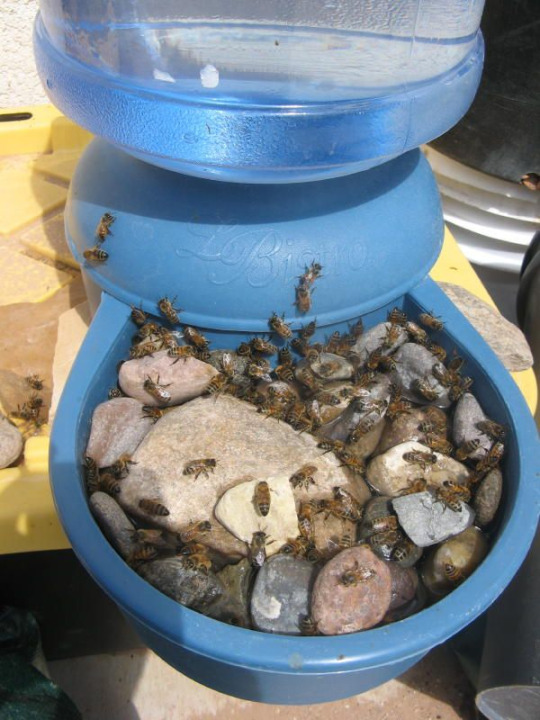
Oftentimes when I see ‘add a water source’ in informational articles about improving your backyard for wildlife, it’s almost always followed by an image of a gorgeous backyard pond with a waterfall and rock lining that looks expensive to set up, difficult to maintain, and overall just… not feasible for me. Arguably, not feasible for a lot of people. And that’s okay! There’s still ways to add water in your garden for all kinds of creatures to enjoy!
There’s tons of ways to create watering stations for insects like bees and butterflies. A self refilling dog bowl can work wonders! Add some stones into the receiving tray for insects to land on or use to climb out, and you’ve got a wonderful drinking spot for all kinds of insects! You can also fill a saucer or other dish with small stones and fill it, though it’ll likely need refilling daily or even several times a day during hot times.
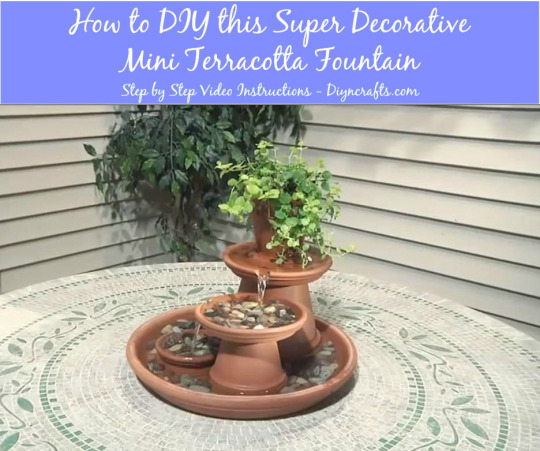
I've seen people online use all kinds of things to make water features. Some go with terra-cotta pots, pebbles, and a cheap pump to get a small and simple fountain. Others use old tires, clay, and a hole in the ground to create an in-ground mini pond system. If all else fails, even a bucket or watertight box with a few plants in it can do the trick--though do be wary of mosquitoes if the water isn’t moving. In situations like these, a solar-powered fountain pump or bubbler are great for keeping the water moving while still making it a drinking option for wildlife (it not even more appealing for some)--and these items can be obtained fairly cheap online!
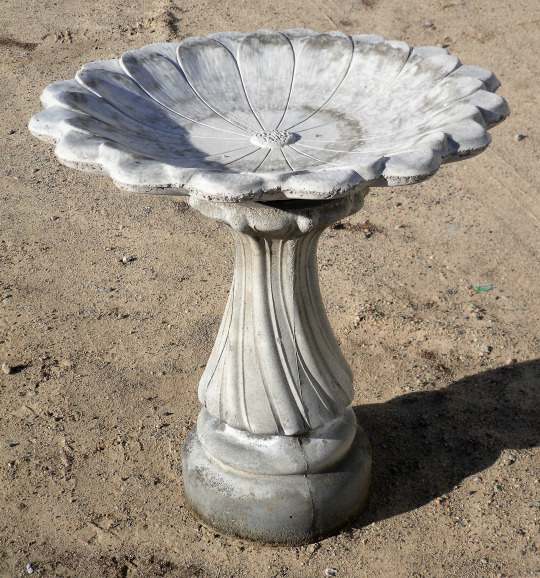
Bird baths are an option as well--a classic way to provide for birds in your area, they can be easy to find online or in a gardening store! The only downside is that a good, quality bird bath can be pricey up-front. However, a nice stone bird bath should last a long time, be easy to clean and refill, and be enjoyed by many birds! I’ve also seen tutorials on how to make your own with quickcrete! Bird baths will be a welcome sight to birds, as they provide a space for them to drink and bathe to regulate the oils in their feathers for flight and insulation. Putting a stone in the middle will also help insects to escape if they fall in, and provide a place to perch so they can get their own drink. You’ll want to change the water and clean the baths regularly--as often as once a week, if you can manage it.
If possible, it’s highly encouraged to fill and refill water features with rainwater instead of tap water. Tap water is often treated, so instead of using hoses or indoor kitchen water, collecting some rainwater is a great alternative. Collecting rainwater can be as simple as leaving cups, bins, or pots outside for awhile.
Butterflies and other creatures will also drink from mud puddles. If you can maintain an area of damp soil mixed with a small amount of salt or wood ash, this can be fantastic for them! Some plants also excel at storing water within their leaves and flowers (bromeliads come to mind), making them an excellent habitat for amphibians as well as a drinking spot for insects and birds.
Bird Feeders and Bird Houses

Some of the fancy, decorated bird feeders are expensive, but others can be pretty low-cost--I got my bird feeder from Lowe’s for around 10 dollars, and a big bag of birdseed was around another 10 dollars and has lasted several refills! If you don’t mind occasionally buying more birdseed, a single birdfeeder can do a lot to attract and support local birds! If you’re handy, have some spare wood, and have or can borrow some tools, you may even be able to find instructions online to make your own feeder. You may not even need wood to do so! Even hummingbird feeders, I’ve found, are quick to attract them, as long as you keep them stocked up on fresh sugar water in the spring and summer!
An important note with bird feeders is that you have to make sure you can clean them regularly. Otherwise, they may become a vector for disease, and we want to avoid causing harm whenever possible. Also keep an ear out and track if there’s known outbreaks of bird diseases in your area. If local birding societies and scientists are advising you take your birdfeeders down for awhile, by all means, do it!

Bird houses are naturally paired with bird feeders as biodiversity promoters for backyard spaces, and it makes sense. Having bird houses suited to birds in your area promotes them to breed, raise their young, disperse seeds, and generally engage in your surrounding environment. Setting them up takes careful selection or construction, preparation, and some patience, but sooner or later you might get some little homemakers! Keep in mind, you will need to clean your birdhouses at least once a year (if not once per brood) to make sure they’re ready and safe for birds year after year--you wouldn’t want to promote disease and parasites, after all. But they could be a valuable option for your landscape, whether you purchase one or construct your own!
Again, do make sure you're putting up the right kind of boxes for the right kinds of birds. Bluebird boxes are some I see sold most commonly, but in my area I believe they're not even all that common--a nesting box for cardinals or chickadees would be far more likely to see success here! And some birds don't even nest in boxes--robins and some other birds are more likely to use a nesting shelf, instead! Research what birds live in your area, take note of any you see around already, and pick a few target species to make homes for!
Solitary Bee Houses

A bee house or bee hotel is a fantastic way to support the solitary bees in your area! For a few dollars and some annual cleaning, you can buy a solitary bee house from most big box nurseries. Alternatively, you can make one at home, with an array of materials you may already have lying around! You can even make them so that they’ll benefit all kinds of insects, and not necessarily just bees.
Though you don’t even necessarily have to break out the hammer and nails, buy a ton of bricks, or borrow a staple gun. Making homes for tunneling bees can be as simple as drilling holes in a log and erecting it, or drilling holes in stumps and dead trees on your property. You might even attract some woodpeckers by doing this!
Providing Nesting Area
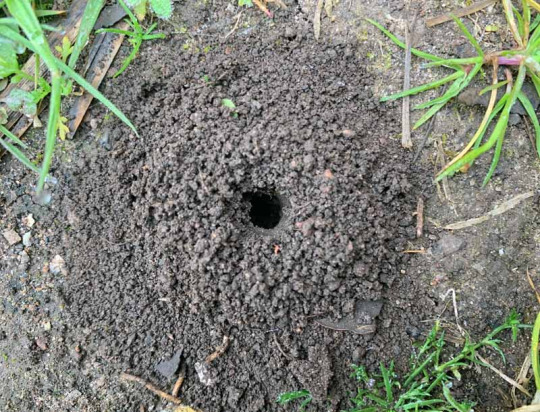
There are tons of different kinds of bees, and they all make different kinds of homes for themselves. Not all of them make big cavity hives like honey bees, or will utilize a solitary bee house. Bumblebees live in social hives underground, particularly in abandoned holes made by rodents--some others nest in abandoned bird nests, or cavities like hollow logs, spaces between rocks, compost piles, or unoccupied birdhouses. Borer, Ground, and Miner bees dig into bare, dry soil to create their nests. Sparsely-vegetated patches of soil in well-drained areas are great places to find them making their nests, so providing a similar habitat somewhere in the garden can encourage them to come! I do talk later in this document about mulching bare soil in a garden--however, leaving soil in sunny areas and south-facing slopes bare provides optimal ground nesting habitat. Some species prefer to nest at the base of plants, or loose sandy soil, or smooth-packed and flat bare ground. They’ve also been known to take advantage of soil piles, knocked over tree roots, wheel ruts in farm roads, baseball diamonds and golf course sand traps. You can create nesting ground by digging ditches or creating nesting mounds in well-drained, open, sunny areas with sandy or silty soil. However, artificially constructed ground nests may only have limited success.
Providing Alternative Pollinator Foods
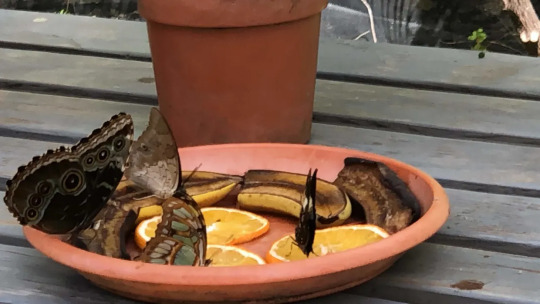
Nectar and pollen aren’t the only foods sought out by some pollinators! Some species of butterflies are known to flock to overripe fruit or honey water, so setting these out can be an excellent way to provide food to wildlife. You may want to be cautious about how you set these out, otherwise it can help other wildlife, like ants or raccoons. Butterflies may also drop by to visit a sponge in a dish of lightly salted water.
Bat Houses and Boxes
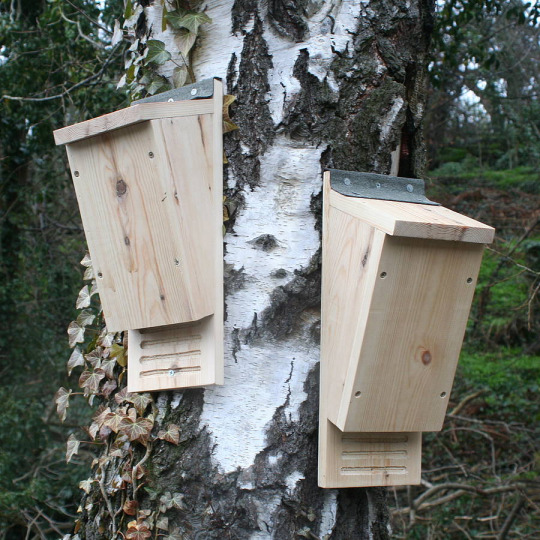
Big or small, whether they support five bats or five hundred, making bat boxes and supporting local bats is a great way to boost biodiversity! Not only will they eat mosquitoes and other pest species, but you may also be able to use the guano (bat droppings) as fertilizer! Do be careful if you choose to do that though--I’ve never had the opportunity to, so do some research into how strong it is and use it accordingly.
Provide Passageway Points
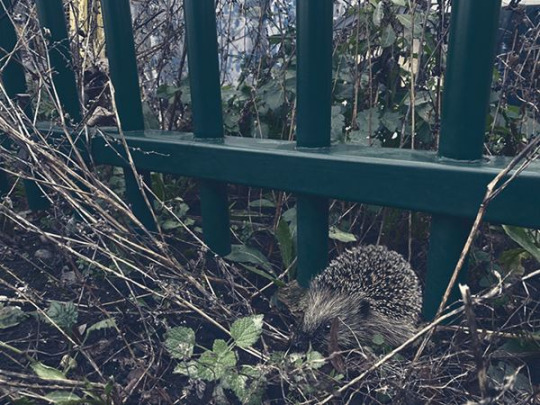
If you want your area to be more accessible for creatures that can’t fly or climb fences, allowing or creating access points can be an excellent way to give them a way in and out. Holes in the bottom of walls or fences can be sheltered with plants to allow animals through.
In a somewhat similar manner, if you’re adding a water fixture, it’s important to provide animals a way to get into and out of the pond--no way in, and they can’t use the water. No way out, and they may drown. Creating a naturalistic ramp out of wood beams or sticks, or stepped platforms out of bricks, stones, or logs can do the trick.
Get or Keep Logs and Brush Piles

I’ve already mentioned logs a good handful of times so far in this post. To be used as access ramps, or as nesting areas for solitary bees. But they have value as much more than that! Logs on the ground provide shelter for all kinds of animals, especially depending on size--anything from mice, reptiles, and amphibians to things like turkey vultures and bears will use fallen logs as shelter. Inside of a decaying log, there’s a lot of humidity, so amphibians are big fans of them--meanwhile, the upper sides of them can be used as sunning platforms by things like lizards. Other animals can also use the insides of logs as nest sites and hiding places from predators too big to fit inside. Fungi, spiders, beetles, termites, ants, grubs, worms, snails, slugs, and likely much more can be found inside rotting logs, using the rotting wood as food sources or nesting places. They can then provide food for mammals, amphibians, reptiles, and birds. They can also be regarded as a landmark or territory marker as wildlife get more familiar with your space.
So how do you get logs for cheap? Try Chip Drop! I talk about them more in a future post, but you can mark saying that you’d like logs in your drop, so they’ll give you any they have! In fact, you may even get a drop faster if you're willing to accept some logs. You may also be able to approach arborists you see working in your area and ask for logs. There may also be local online listings for people selling logs for cheap, or just trying to get rid of them. If there’s land development going on near you, you may be able to snag logs from trees they cut down to make space. Do keep in mind, you don’t need to have huge gigantic logs laying around your property to make an impact--even small logs can help a lot.

If possible, creating and leaving brush piles on the edge of your property can be a great boost to biodiversity--even if you may not see the wildlife using it. They’ll provide shelter from weather and predators, and lower portions are cool and shady for creatures to avoid the hot sun. The upper layers can be used as perch sites and nest sites for song birds, while lower layers are resting sites for amphibians and reptiles, and escape sites for many mammals. As the material decays, they also attract insects, and as such they’ll attract insect-eating animals too. As more small animals find refuse in your brush pile, their predators will be attracted to them as well. Owls, hawks, foxes, and coyotes are known to visit brush piles to hunt. Making a brush pile can be as simple as piling branches and leaves into a mound, as big or as small as you want. You can even use tree stumps or old fence posts near the base, and keep stacking on plant trimmings and fallen branches. Do note that you don’t want to do this near anything like a fire pit.
Don't forget, with all of these, your mileage may vary for any variation of reasons, so don't worry if you can't take all of even any of these actions! Even just talking about them with other people may inspire someone else to put out a bat box, or leave a few logs out for wildlife!
That's the end of this post! My next post is gonna be about ways to get seeds and plants as cheaply as possible. For now, I hope this advice helps! Feel free to reply with any questions, success stories, or anything you think I may have forgotten to add in!
#biodiversity#solarpunk#environmental stewardship#gardening#outdoor gardening#(i know this is literally the Dont Gotta Garden post but these could also be excellent additions to a preexisting garden so)#ani rambles#out of queue#the biodiversity saga#here in the tags to once again emphasize your mileage may vary with all of these#my mom is scared of bats theres no way in hell shes gonna let me put up a bat box#but I have been able to put out a shallow bird bath and a little solarpowered hummingbird bath fountain#do what you can! every bit counts! You may be able to do something that I or your neighbors can't!#for example my nextdoor neighbors have literally no trees in their backyard where the hell would they put a bat box#meanwhile i have trees in my backyard but still can't put up a bat box. maybe the neighbors next to me could!#similarly brush piles are a no go for my family but someone somewhere else could set one up!#i am rambling in the tags now uh long story short do what you can don't stress about what you can't
4K notes
·
View notes
Text




but with you I see stars insp
#I am dead LOOK AT THIS I am so excited I am crying and want to throw up I CANNOT believe I just accomplished this#I just did so many things I didn't know how to do to make this set and I am so in love and it's so pretty#please reblog please share do not let this masterpiece die with me#good omens#goodomens#crowley#aziraphale#aziraphel#aziraphale and crowley#david tennant#michael sheen#gomens#good omens tv#aziracrow#azirafell#aziraphale x crowley#crowley x aziraphale#nikkirookgif#goodomensedit
2K notes
·
View notes